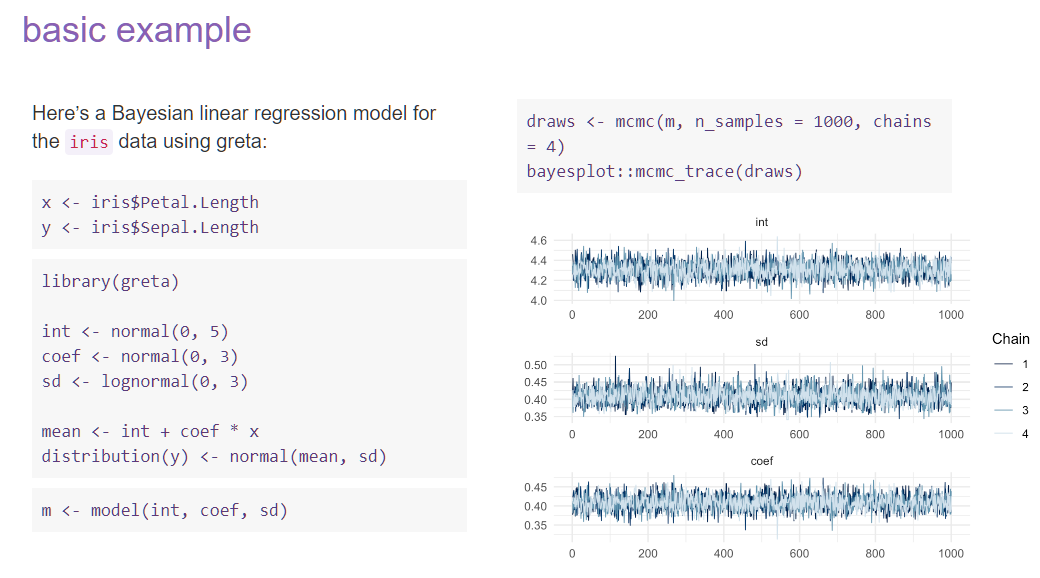Bayesian Modeling
with R2jags
Zhi Yang
2019-04-08
A mini GOTB family tree
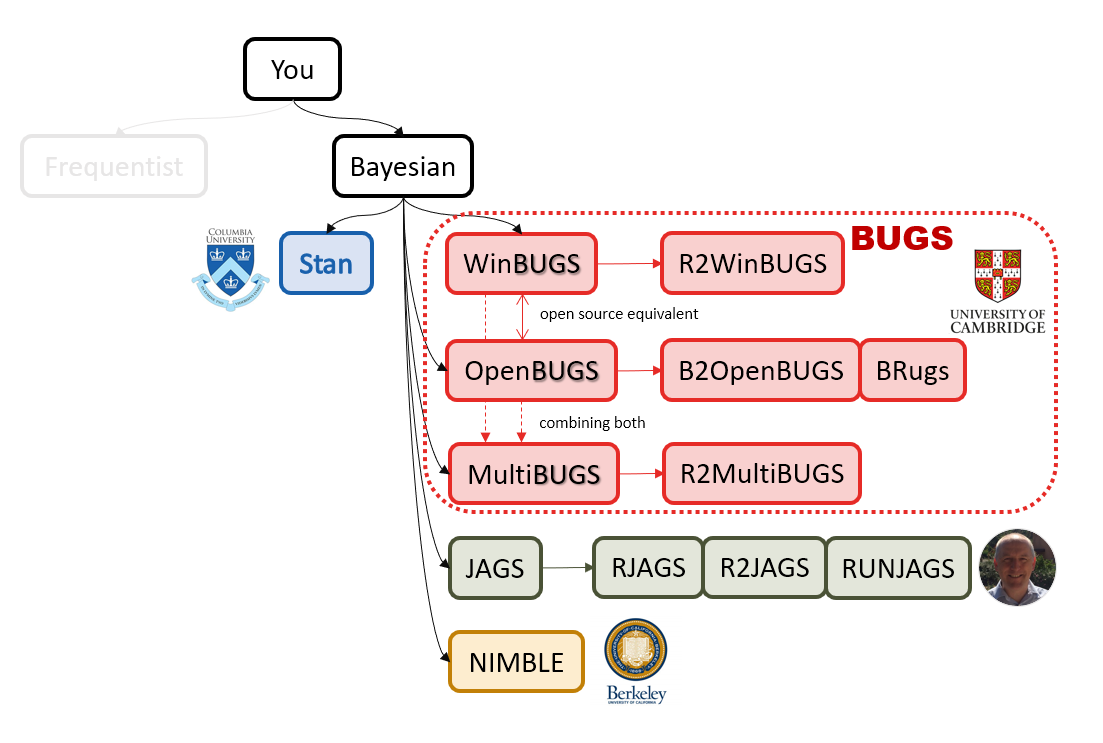
What'll be in this talk
Some history about tools for Bayesian modeling
Bayes' theorem, jargons and Shiny demo (prior, posterior ...)
A walkthrough of using R2jags (meetup pizza example)
More examples (linear regression)
Why Bayesian?
Why Bayesian?
You learn from the data
Why Bayesian?
You learn from the data
You know the uncertainty of the estimated parameters
My Journey From Frequentist to Bayesian Statistics
JAGS
JAGS
stands for
Just Another Gibbs Sampler
developed by Martyn Plummer

Why JAGS?
why not WinBUGS 🐞 or Stan?
JAGS vs. WinBUGS
WinBUGS is historically very important with slow development
JAGS vs. WinBUGS
WinBUGS is historically very important with slow development
JAGS has very similar syntax to WinBUGS and it allows cross-platform
JAGS vs. WinBUGS
WinBUGS is historically very important with slow development
JAGS has very similar syntax to WinBUGS and it allows cross-platform
Great interface to R! (rjags, R2jags,runjags)
When there is WinBUGS already, why is JAGS necessary?
JAGS
- longer history with tons of resources 📕📝🎓
- easy to learn and run it
- need to recompile model
- fewer developers
- less viz tools
- various MCMC sampling methods
Stan
- A newer tool with great team/active community
- steeper learning curve
- no need to recompile
- Syntax check in R 😱
- ShinyStan (applicable to JAGS)
- require fewer iterations to converge
Which one's faster? Inconclusive
My situation Stan doesn't support discrete sampling
Why me?
I wrote a part of my dissertation with JAGS
I've repeatedly read through JAGS, WinBUGS manual and numerous journals
I've four years' experiences with searching JAGS examples in Google and GitHub
Installation
Install R
Install RStudio
Install the JAGS from https://sourceforge.net/projects/mcmc-jags/
Install the R2jags package from CRAN:
install.packages("R2jags")library(R2jags)30 seconds on Bayes' theorem
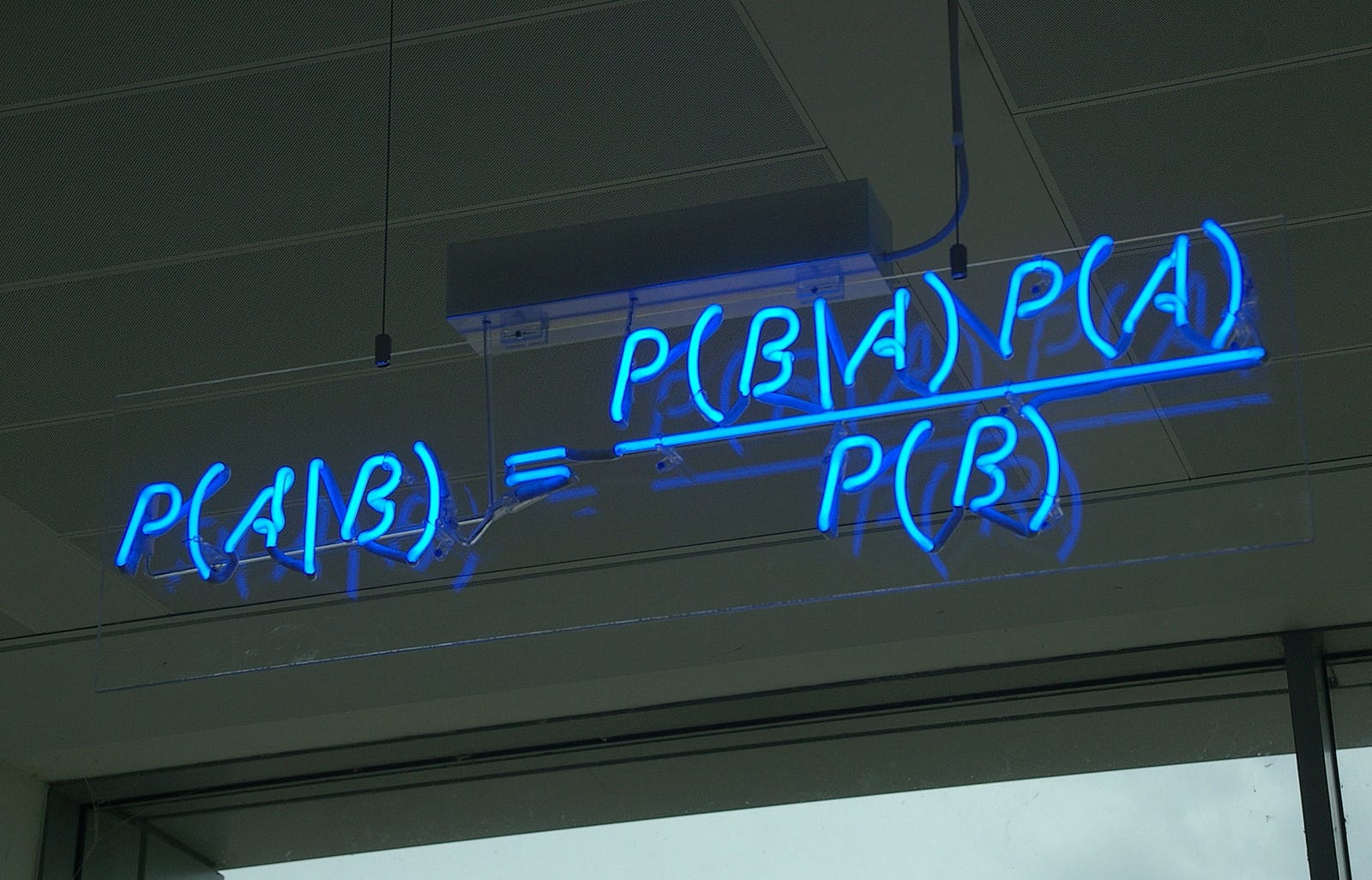
Changing our beliefs based on evidences Posterior=Likelihood×PriorEvidence
Prior: strong vs. weak ?
Data: insufficient vs. sufficient ?
Nat Napoletano:Bayes' Theorem for Everyone
Shiny Demo
The focus of the analysis presented here is on accurately estimating the mean of IQ using simulated data.
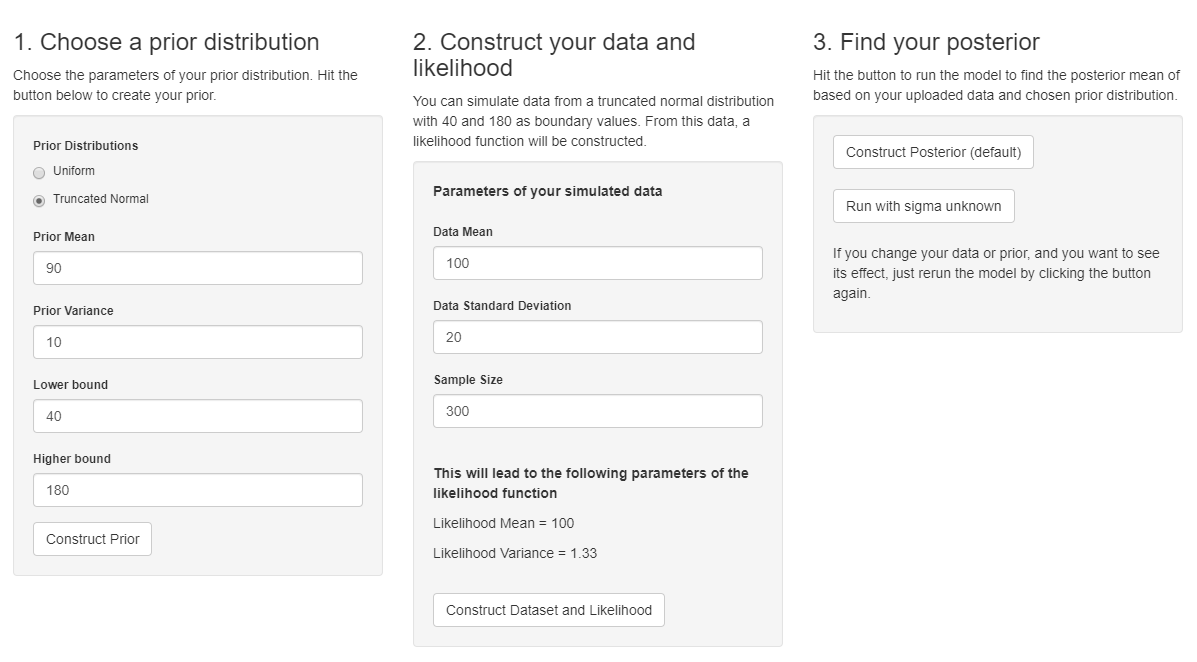
https://www.ncbi.nlm.nih.gov/pmc/articles/PMC4158865/
Strong prior vs. weak prior
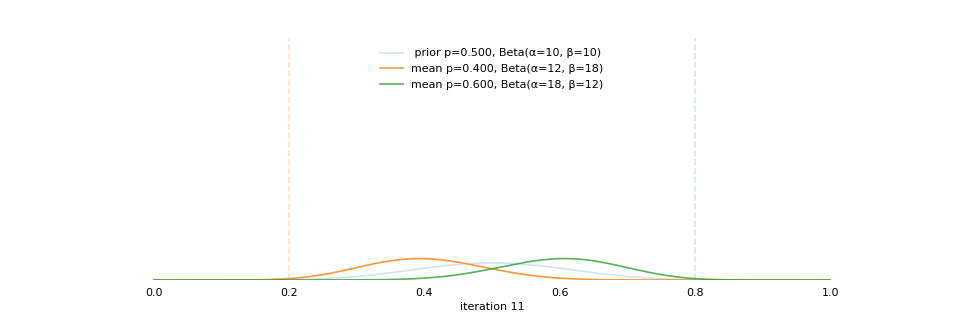
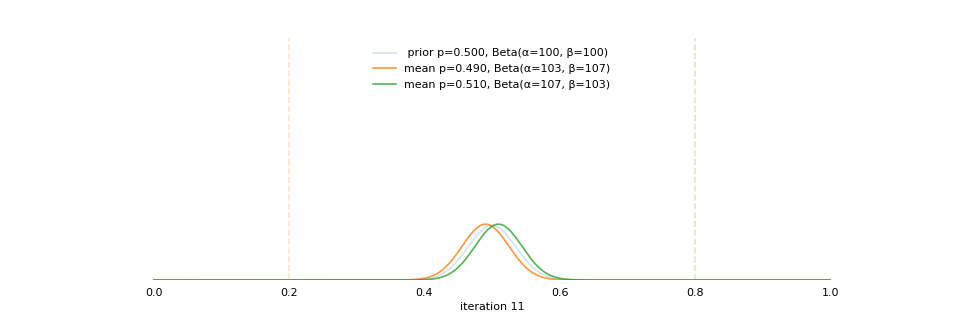
https://towardsdatascience.com/visualizing-beta-distribution-7391c18031f1
Let's get started!
We hold meetings every month and post it on meetup.com, which tells us how many people've signed up, n. But not everyone show up (i.e., traffic). So, we'd like to know what percentage of people, θ, will show up to order enough pizzas.
Yi|θ∼Binom(ni,θ)
θ∼Beta(a,b)
Weak prior:
Beta(1,1)↔Unif(0,1)
Y <- c(77, 62, 30)N <- c(39, 29, 16)Write the model
But as you know, someone (@lukanegoita) said

Write the model
Yi|θ∼Binom(ni,θ)
θ∼Beta(a,b)
In R
model{for(i in 1:3){ Y[i] <- rbinom(1, N[i], theta) } theta <- rbeta(1, 1, 1)}In JAGS
model{for(i in 1:3){ Y[i] ~ dbinom(theta, N[i])} theta ~ dbeta(1, 1)}- A variable should appear only once on the left hand side
- A variable may appear multiple times on the right hand side
- variables that only appear on the right must be supplied as data
Tips on syntax
No need for variable declaration
No need for semi-colons at end of statements
use ddist instead of rdist for random sampling
dnorm(mean, precision) not dnorm(mean, sd)
It allows matrix and array
It is illegal to offer definitions of the variable twice
Write the model
suppressMessages(library(R2jags))model_string <-"model{# Likelihoodfor(i in 1:3){ Y[i] ~ dbinom(theta, N[i])}# Prior theta ~ dbeta(1, 1)}"# DataN <- c(77, 62, 30)Y <- c(39, 29, 16)# specify parameters to be moniteredparams <- c("theta")rjags vs. runjags vs. R2jags
R2jags and runjags are just wrappers of rjags
runjags makes it easy to run chains in parallel on multiple processes
R2jags allows running until converged and paralleling MCMC chains
Otherwise, they all have very similar syntax and pre-processing steps
Choosing R2jags
output <- jags(model.file = textConnection(model_string), data = list(Y = Y, N = N), parameters.to.save = params, n.chains = 2, n.iter = 2000)## Compiling model graph## Resolving undeclared variables## Allocating nodes## Graph information:## Observed stochastic nodes: 3## Unobserved stochastic nodes: 1## Total graph size: 9## ## Initializing model## ## | | | 0% | |** | 4% | |**** | 8% | |****** | 12% | |******** | 16% | |********** | 20% | |************ | 24% | |************** | 28% | |**************** | 32% | |****************** | 36% | |******************** | 40% | |********************** | 44% | |************************ | 48% | |************************** | 52% | |**************************** | 56% | |****************************** | 60% | |******************************** | 64% | |********************************** | 68% | |************************************ | 72% | |************************************** | 76% | |**************************************** | 80% | |****************************************** | 84% | |******************************************** | 88% | |********************************************** | 92% | |************************************************ | 96% | |**************************************************| 100%## Compiling model graph## Resolving undeclared variables## Allocating nodes## Graph information:## Observed stochastic nodes: 3## Unobserved stochastic nodes: 1## Total graph size: 9## ## Initializing model## ## | | | 0% | |** | 4% | |**** | 8% | |****** | 12% | |******** | 16% | |********** | 20% | |************ | 24% | |************** | 28% | |**************** | 32% | |****************** | 36% | |******************** | 40% | |********************** | 44% | |************************ | 48% | |************************** | 52% | |**************************** | 56% | |****************************** | 60% | |******************************** | 64% | |********************************** | 68% | |************************************ | 72% | |************************************** | 76% | |**************************************** | 80% | |****************************************** | 84% | |******************************************** | 88% | |********************************************** | 92% | |************************************************ | 96% | |**************************************************| 100%Visualizing output
plot(as.mcmc(output))
Visualizing output
library(mcmcplots)mcmcplot(as.mcmc(output),c("theta"))denplot(as.mcmc(output),c("theta"))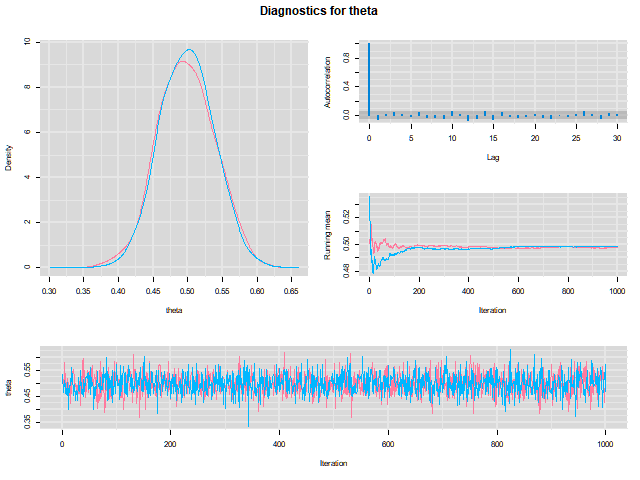
Model diagnostic
So it might take a longer time for run

Model diagnostic and convergence
output$BUGSoutput$summary## mean sd 2.5% 25% 50% 75%## deviance 14.6685495 1.42564249 13.6497484 13.7569065 14.104791 15.0374241## theta 0.4962242 0.03867905 0.4226714 0.4693877 0.496706 0.5209497## 97.5% Rhat n.eff## deviance 18.7817874 1.002871 630## theta 0.5723382 1.000970 2000If it fails to converge, we can do the following,
update(output, n.iter = 1000)autojags(output, n.iter = 1000, Rhat = 1.05, n.update = 2)weak prior vs. strong prior
output$BUGSoutput$summary## mean sd 2.5% 25% 50% 75%## deviance 14.6685495 1.42564249 13.6497484 13.7569065 14.104791 15.0374241## theta 0.4962242 0.03867905 0.4226714 0.4693877 0.496706 0.5209497## 97.5% Rhat n.eff## deviance 18.7817874 1.002871 630## theta 0.5723382 1.000970 2000output2$BUGSoutput$summary## mean sd 2.5% 25% 50% 75%## deviance 15.2204981 1.7165810 13.6500147 13.9259913 14.6814049 15.9249686## theta 0.5346611 0.0298314 0.4752045 0.5146234 0.5355181 0.5547805## 97.5% Rhat n.eff## deviance 19.846200 1.000531 2000## theta 0.591993 1.000510 2000weak prior vs. strong prior
denplot(as.mcmc(output), parms = "theta", xlim = c(0.3, 0.7))
denplot(as.mcmc(output2), parms = "theta", xlim = c(0.3, 0.7))
linear regression
In JAGS
model<-"model{# Likelihoodfor(i in 1:N){ y[i] ~ dnorm(mu[i], tau) mu[i] <- beta0 + beta1*x[i]}# Prior # intercept beta0 ~ dnorm(0, 0.0001) # slope beta1 ~ dnorm(0, 0.0001) # error term tau ~ dgamma(0.01, 0.01) sigma <- 1/sqrt(tau)}"In statistics 101
Yi=b0+b1Xi+σ Y∼N(b0+b1X,σ2)
In R
lm(y~x)## Compiling model graph## Resolving undeclared variables## Allocating nodes## Graph information:## Observed stochastic nodes: 15## Unobserved stochastic nodes: 3## Total graph size: 74## ## Initializing modelInterpretation
In JAGS
lm_output$BUGSoutput$summary[1:2, c(3,7)]## 2.5% 97.5%## beta0 -8.853992 52.131691## beta1 -16.496277 3.19287395% credible interval
In R
confint(lm(y~x))## 2.5 % 97.5 %## (Intercept) -9.32782 51.322335## x -16.19329 3.48652895% confidence interval
Resources 📕+💻
If you've got 2hrs:
- useR! International R User 2017 Conference JAGS workshop by Martyn Plummer <-- 👨 of JAGS
If you've got 5 mins:
RJAGS: how to get started by Rens van de Schoot, retweeted by Martyn Plummer
If you're a book lover:
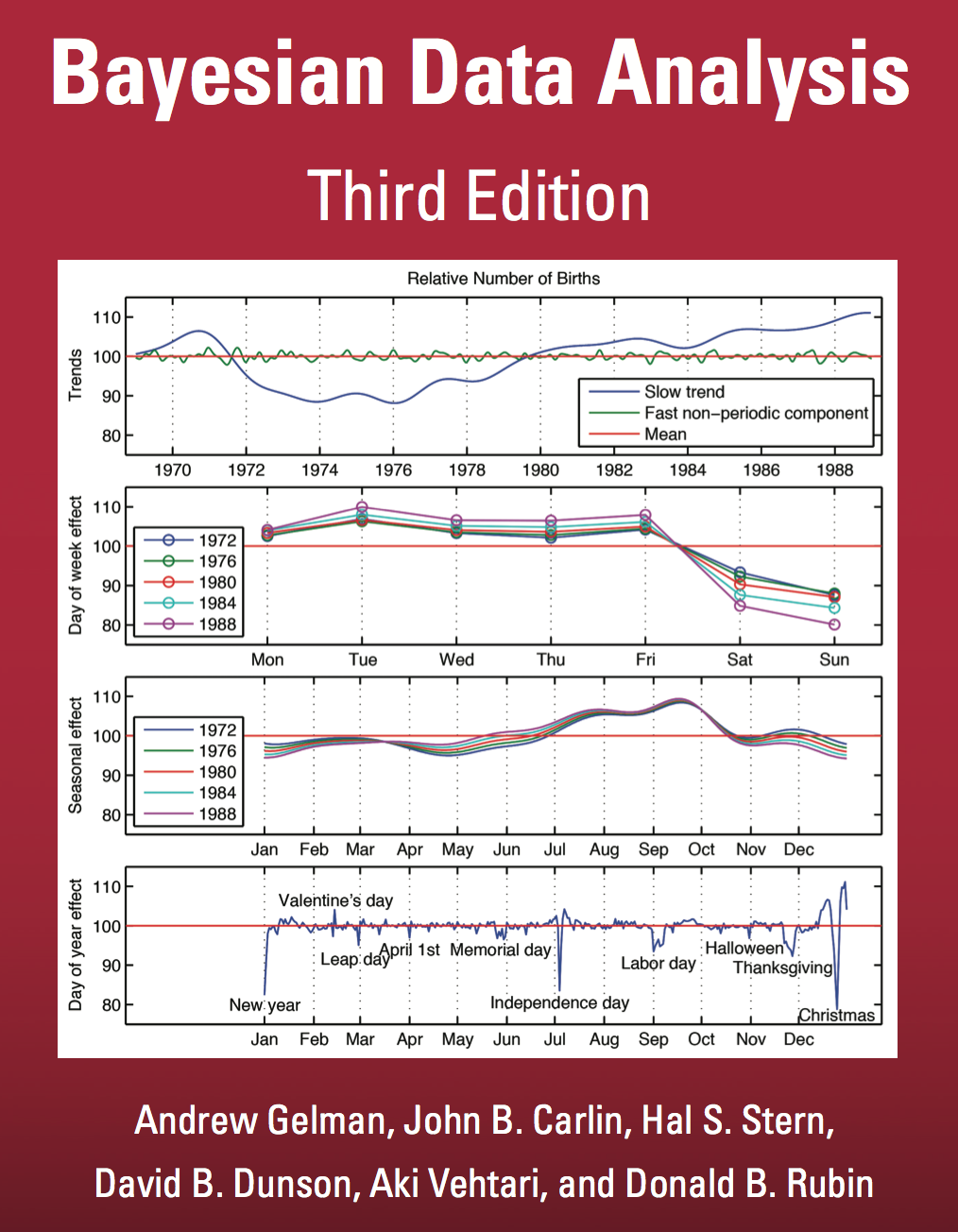

What about puppies?
"perky ears" + "floppy ears" ?= "half-up ears"
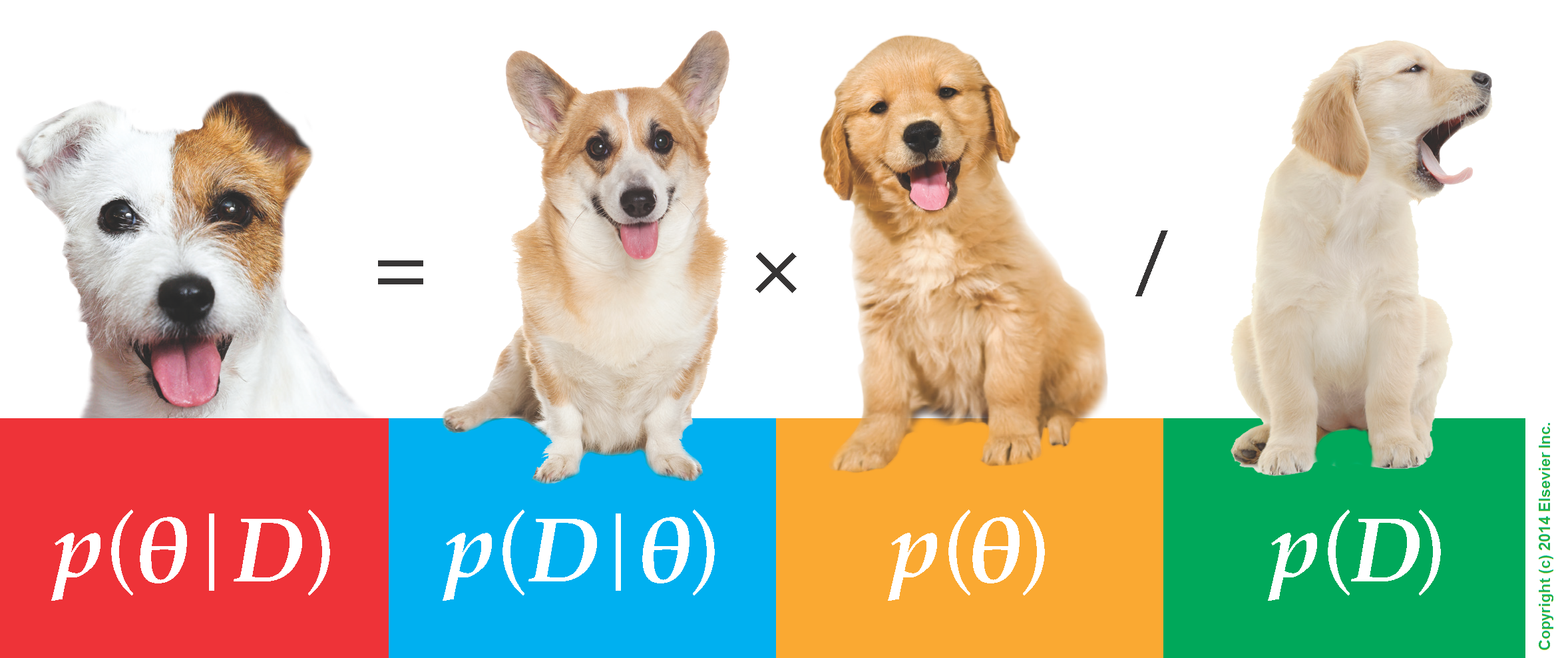
More ...
Meet greta
For those still can't decide which any external tool?
- greta allows you to write models without learning another language like BUGS or Stan
- It uses Google TensorFlow (fast!)

greta example
